Back in the South Pacific cyclone (Hurricane) season of 1982–83 we were avoiding them by spending an extended time in Tahiti aboard our home, an Offshore Sailboat. All available information said the storms would be much further west nearer Tonga and Fiji. Life was splendid. We were tied stern to the quay in downtown Papeete.
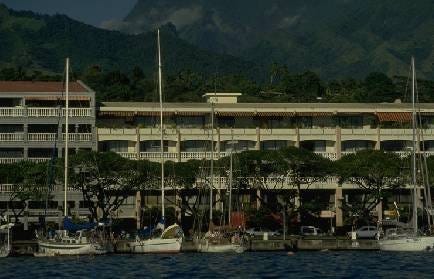
One fine morning a young official from the Port Captains office came by very agitated shouting “Big Storm Coming”. Little did we know that this was the start of an eventful few months.
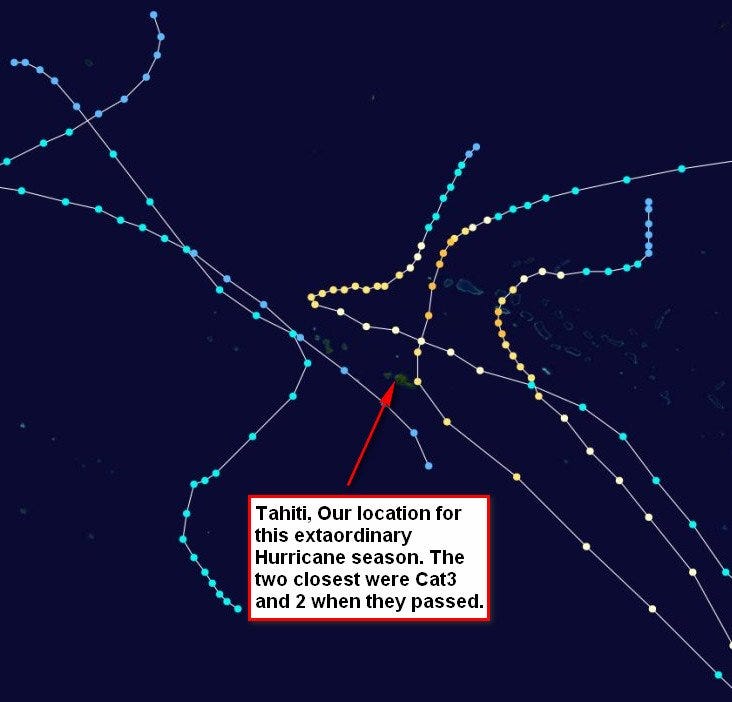
We had 5 systems threaten us and 2 hits at full hurricane force. Both were spent at anchor. The first, in Papeete harbour, struck with the wind breaking from over the mountain peak, going from flat calm to in excess of hurricane force in mere moments. I watched in awe as huge sheets of corrugated steel panels flew through the air as they were ripped from the power station. They were flipping like leaves in a breeze.

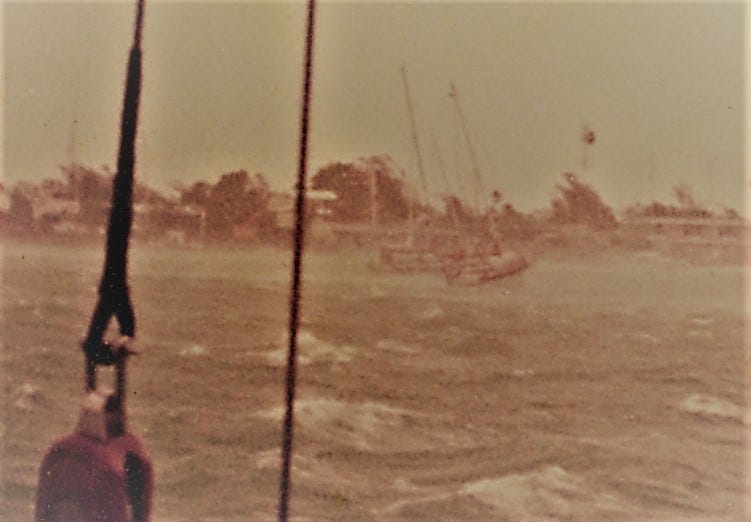
The second storm came closer, lasted longer and was much later in the season. The three in between gave us ample time to perfect what came to be known as the “death watch”. That extended time from the first detection to will it get us or not.
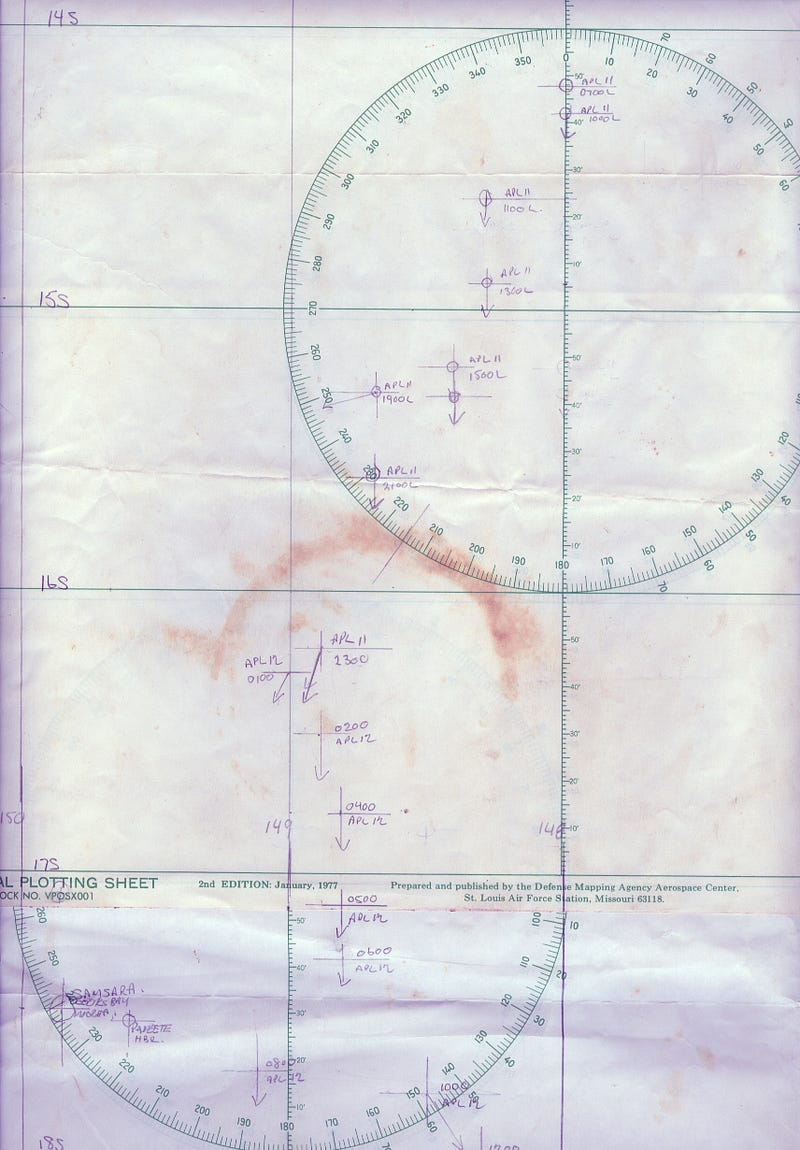
This encounter occurred in Cooks bay on the island of Moorea 12 miles from Tahiti. It hit at category 3. Thirteen hours of sheer terror. I had anchored in a small cove with a sloping sand beach between us and the coral reef beyond.
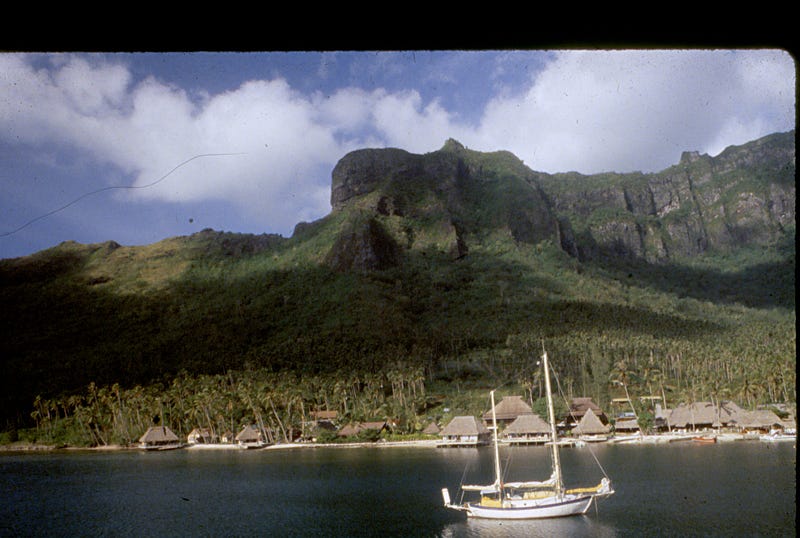
The promontory of land was home to the beach bar of the adjoining luxury resort. To prepare, two 40 pound anchors each on 150 feet of chain were attached to 90 pounds of lead cannonballs. Another 300 foot single nylon rope continued to the boat. This was in 5 fathoms (30′) of water. All this gear was to keep the anchor in the sand and the line from breaking (the physics of catenary). If it did break or drag we would end up on that nicely sloped beach with a bar nearby. Within the first half hour, the bar had blown away! You could not stand against the wind. Seeing or breathing required a mask and snorkel. The 3/4″ anchor line was stretched to the size of your little finger. I spent most of my time belly down on the foredeck easing out the line during a lull to keep it from chafing through at the bow of the boat. Our anchors held. We returned to Tahiti where we were granted a six month extension on our visas to help in the repair of the 26 sailboats that blew ashore.
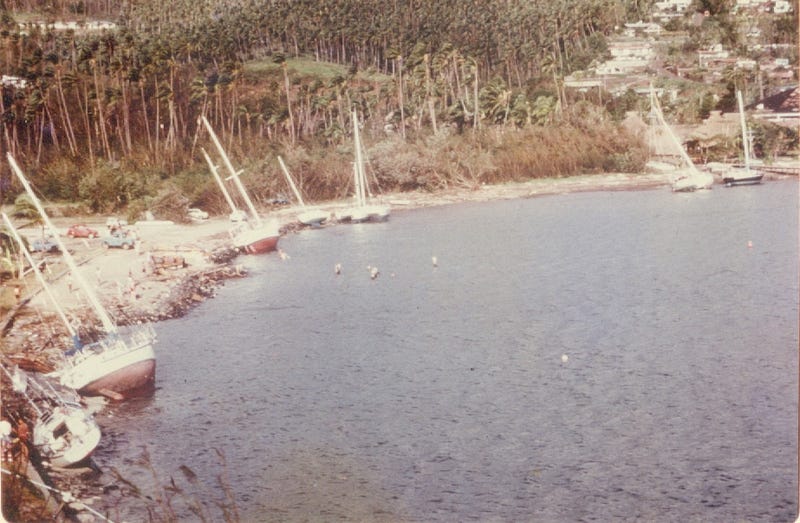
We later learned that getting these storms at all was because of an un-forecast extreme “El Nino” event. The first weather satellites to cover the tropical Pacific had been deployed just months earlier. A programming decision to reject any variance of more than 2.5 degrees F. had been made. A diligent meteorologist aboard a US Icebreaker passing Chile on its way to Antarctica for the summer season discovered this. He daily took water temperature readings. He recorded and submitted them to NOAA where they did not turn up. A mute point for us.